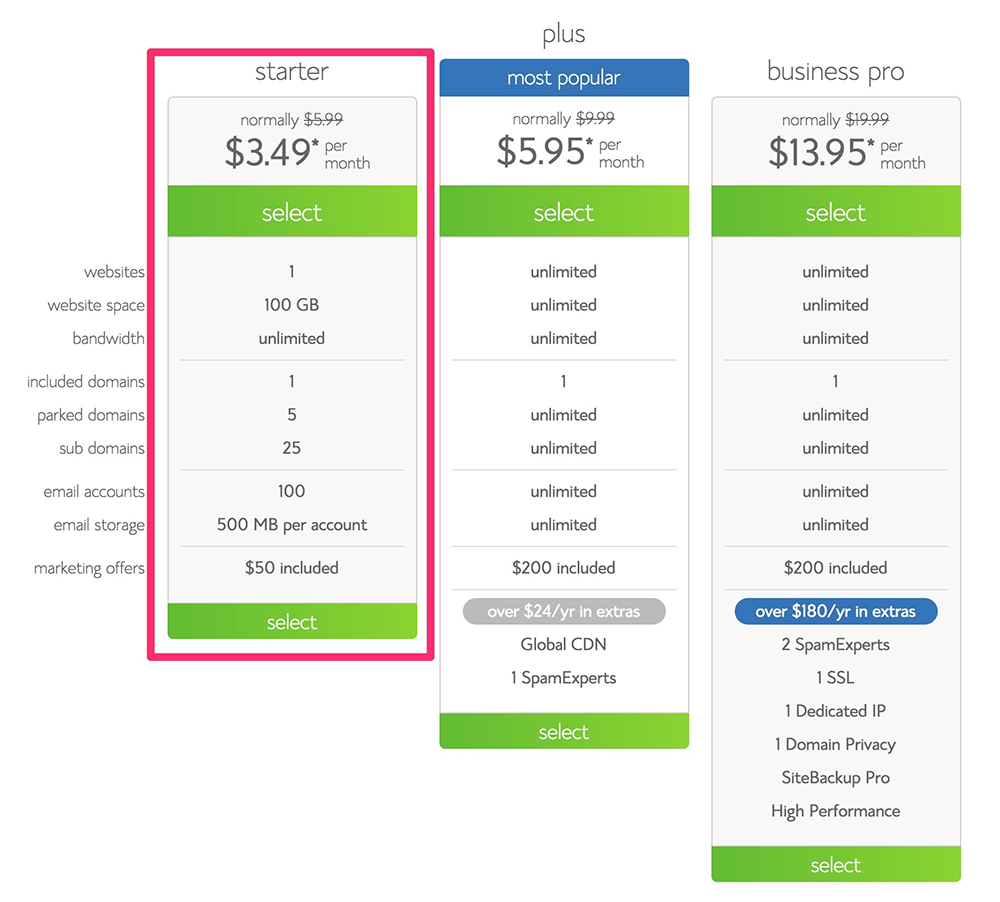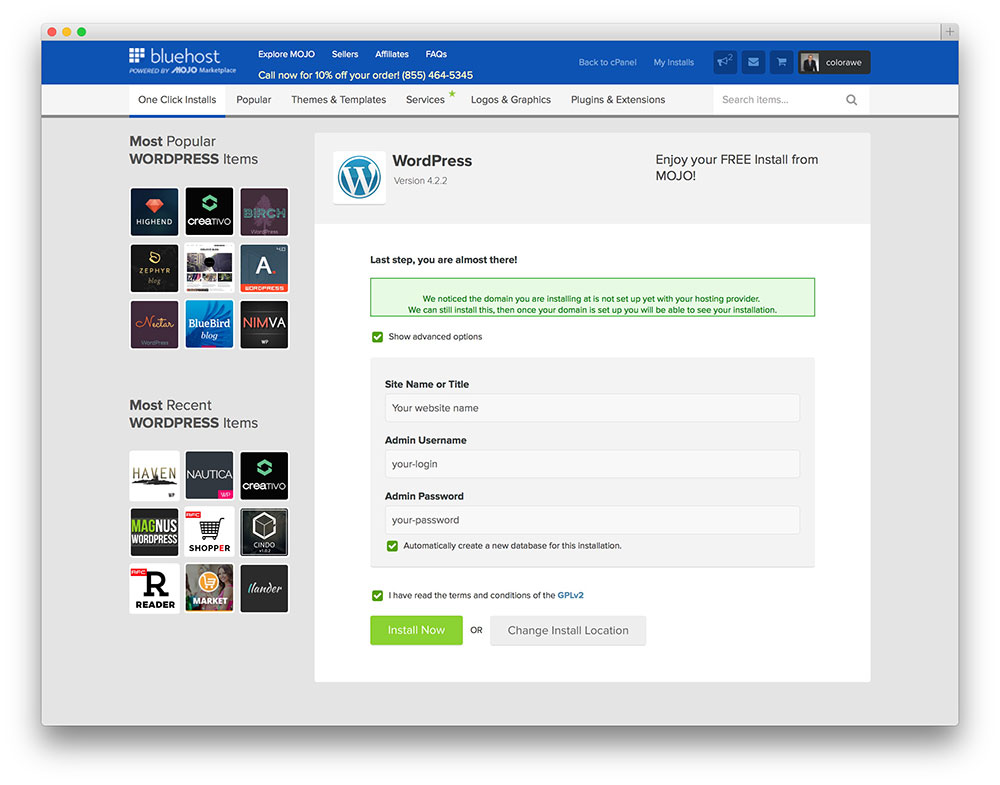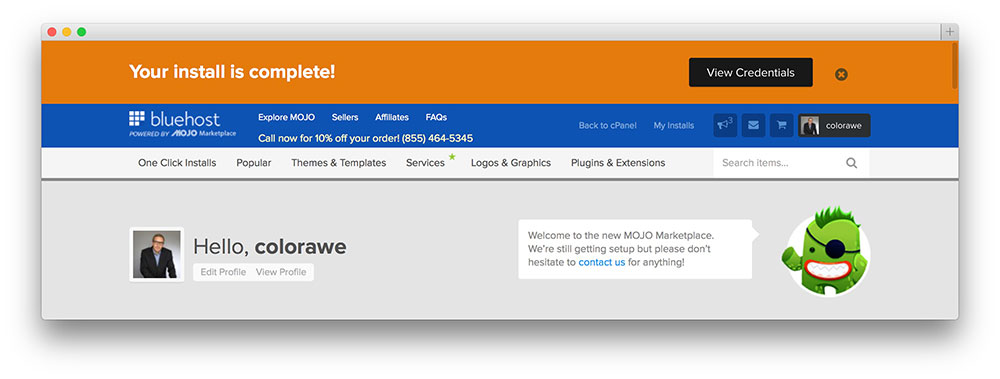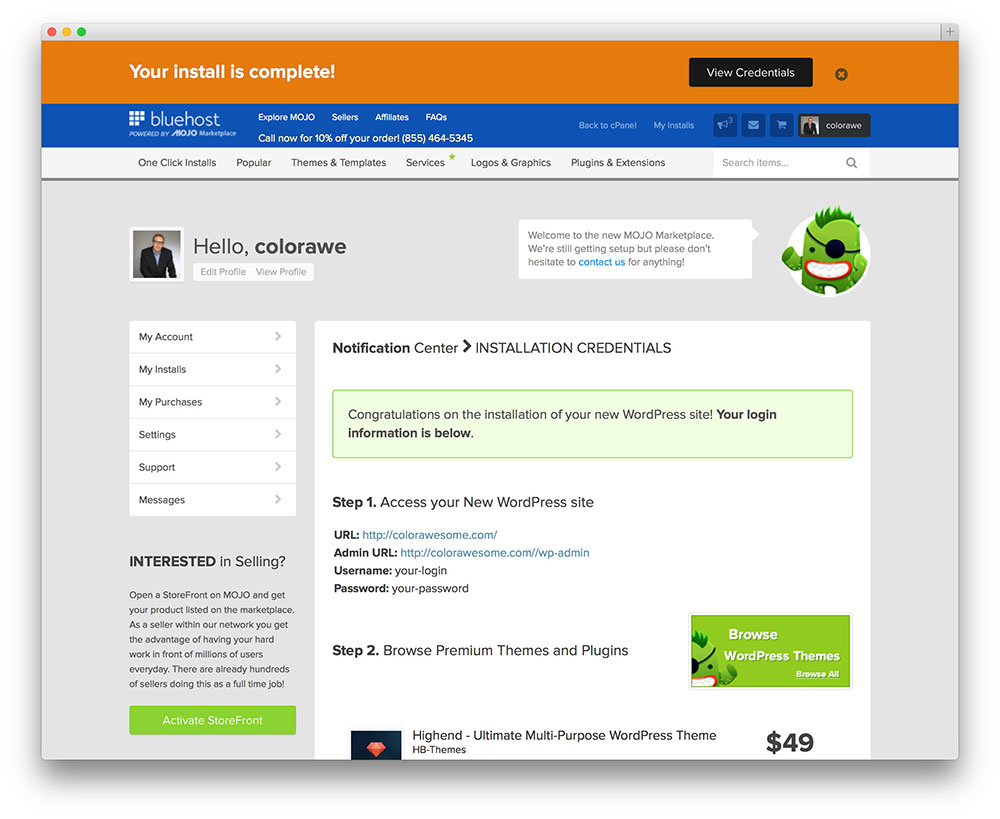
How to Make a WordPress Website – Step-by-Step Guide for Beginners
6 reasons why you’ll love this awesome website setup guide:
This guide is very detailed, comprehensive and easy to follow even if you’re not tech-savvy.
This guide is updated weekly to keep up with the latest web design trends.
Within an hour your website will be up and running and is going to be responsive and mobile-friendly.
Platform-Specific
Your website will be based on the right platform and in the right way.
We guarantee that by the end of this guide you’ll have a working website
Free Support
We are open for questions. Drop a comment below with your question and we will be happy to help
At Colorlib we spend a great deal of time reviewing products and providing good reading content for our readership. Many of whom are familiar with the workings for a website running on WordPress. This guide is intended to help anyone who is creating their first website, likely with WordPress. It’s the platform we recommend and use for our website.
A step by step tutorial – we start off with finding the right content management system, choosing a domain name, then the right web hosting service, adding the right themes, plugins and customizing your site’s appearance. By the time you are done with this how to make a WordPress website for beginners guide you’ll have a full fledged website ready to go!
This guide contains three simple and easy-to-follow steps:
Choose the right platform for your website
STEP 2
Choose the right website name (domain) and hosting
STEP 3
Configure your newly created WordPress website
STEP 1
Choose the right platform for your website
What is a Content Management System?
A content management system (CMS) in simple terms, is a platform of sorts or a mechanism which permits you to create your content and publish it on a website. Let’s say that it is a coat hanger stand with the coat being your content.
It is software that is installed on your host’s server. Your host provider will likely have a one click installation process to help you get your CMS installed. Once it is installed, you can log in to your site as the admin and add photos, text and other content. You can use the content you’ve added to create blog posts and other forms of content like a product page or display a work portfolio on your website.
A CMS is way more than just a means to an end, you can install a theme which is a modified template to suit the specific niche and purpose of your site. With the template added, you can customize the appearance of your site. You can add plugins to add function to your site, for example a social sharing plugin to help spread the word about your site via social networks.
All of this and more can be accomplished with a Content Management System.
Which CMS is best for you?
An overwhelming majority of websites use WordPress. The other two options that lag way behind in comparison to WordPress (certainly in popularity) are Joomla and Drupal.
WordPress
The ideal option for someone who’s creating his or her first website. It has considerable scalability and works well with low and medium traffic websites. We receive 1.5 million views every month and we run WordPress, so that gives you an idea of what medium traffic constitutes if you were wondering. Even large websites such as TIME Magazine, CNN, TED, Techcrunch, NBC and others use WordPress to server millions of pageviews each day.
WordPress has a great number of points that can be made in favor of its use.
- Easy To Install: Most hosting services have one click installation options for WordPress given the number of people who use it.
- Strong Community & Open Source: It is free and used by a lot of people. There are a plethora of free themes and plugins that you can leverage for your site. Apart from the freebies, premium themes and plugins are cheap and come with excellent support services from their providers. If you ever have a doubt or a problem a simple Google search can answer your query. If fact, I’ll go so far as to say you’ll find the answer to your doubts answered by the first three results of a Google search. A strong community will aid in your WordPress initiation process should you ever encounter any hiccups. And you can always drop your comments here either Aigars or me will be sure to respond to the at the earliest opportunity.
- Ideal For Non tech savvy online entrepreneurs: Most of the products associated with WordPress, such as themes and plugins are fairly straightforward and intuitive to use. Installing a Content Management System like WordPress is only the first step of the process, there is much more to website creation beyond that. Like WordPress which is easy to install and configure, the tools that you’ll require to make your website whole are easy to handle.
Two not so quite favorable things about WordPress
- One drawback of WordPress, it may become unwieldy if your site grows far too large and receives an enormous amount of daily traffic. The cost of your hosting goes up. But we are talking about traffic in the order of millions here and it isn’t something you should let bother you for now.
- Another potential problem is the quality of free plugins and themes. While most are good and have fairly high security standards, you’d should be wary of unknown third party plugins. WordPress is a secure platform out the box, but adding third party software while exercising poor judgement is a bad idea. That being said security vulnerabilities are generally fixed as soon as they are detected.
As you can see WordPress is by far the most popular content management system and is used by 65% CMS powered websites worldwide.
The thing you need to know is all CMSs have one drawback or the other. And for a new web admin, WordPress is the best way to go! But I’ll talk about Drupal and Joomla, all the same. You should certainly be aware of them, should you decide to switch your CMS at a later point in time. And it will also tell you why perhaps Joomla and Drupal are not best suited to the needs of beginner.
Drupal
Unlike WordPress, Drupal is not too well suited for the technically inept or a first time website developer. Drupal is an open source CMS and is largely utilized by big corporations with vast websites and high traffic loads. It has its own customization possibilities with themes and plugins created to add value to Drupal sites. Drupal websites are a bit faster and little less taxing on the host’s server resources.
But if you’re new to web development, it isn’t for you. Why? It is more complicated than it needs to be to meet your requirements. It is designed for complex, vast websites with high traffic loads, which your new website will not be to begin with. Given that, there is no need to add to the difficulty of the website creation process unnecessarily. And besides, you can always switch to Drupal at a later date.
Joomla
Open source and free like the previous two platforms. It is a tad better than the other two when it comes to creating a community of users (like a small social network or tight knit community for your readers) and is far more amenable to creating social websites with a lot of interaction and engagement from users. It is easier to handle than Drupal and offers more than WordPress in terms of performance and tweakability.
And again my reasons are the same for not recommending it for you, unnecessary complication that you do not need.
WordPress – Probably the best option for you!
If you are starting off with a new domain name with no traffic so to speak of, you are better off with WordPress. It is exceedingly easy to use, it is free and comes with an enormous number of premium quality free themes and plugins. The cost of hosting is low and many hosts provide for easy one click installation of WordPress. And since a growing percentage of online entrepreneurs do not know how to program in HTML, CSS and PHP, WordPress is the best choice as it offers excellent customizability even to WordPress newbies.
Click here to summarize, why WordPress is the best choice, if you still harbour any lingering doubts. (Optional)
Now that you have chosen the best platform for your website you can proceed with the next step.
STEP 2
Choose the right website name (domain) and hosting
Before you choose a domain name, you’ll need be sure of the niche you’d like to concentrate on. Selecting a niche area to focus on, is an important task in and of itself. To create a revenue generating website it is critical that you research the target keyword pool and the niche it is derived from. For the time being, just make sure it is something you like and are genuinely passionate about. And ensure that you have reasonable expertise in the subject matter involved.
You can literally register any available (not registered yet) domain name but here is something I recommend:
- Business website – If you are making a website for your business it would be best to choose a domain name that is your company name or brand. An example domain name would be YourComapanyName.com or YourBrandName.com
- Personal website – If it is going to be your personal website it would be great to go with com
- Hobby website – The sky’s the limit ?
Most popular domain names extensions (the end part of website address, like .com) are .com, .org, .net, but in recent years a huge amount of new domain extensions have been introduced (Wikipedia). Now you can register crazy domain names such as YourCompanyName.pizza, YourCompanyName.green, or YourName.ninja.
However, for your first website I recommend to stick with .com, .net and .org. New domain extensions haven’t gone mainstream yet and might confuse your visitors. Even some social networks, services and apps have problems displaying these new domain names that’s why I advice to avoid them, at least for now.
Choosing The Right Domain Name
The next step in our process involves choosing a domain name. A domain name is basically the URL one types into a browser’s address bar to visit a particular website.
Getting the right domain name is crucial. A few things you need to keep in mind while considering domain name choices.
- Short – Shorter names work better when it comes to remembrance and are easy to type as well.
- Brandable – Remember your domain also runs to your brand, make sure it isn’t memorable for all the wrong reasons.
- Memorable – People forget easily, come up with a name that first time visitors to your site are likely to remember.
- Catchy – You want a domain name that rolls off the tongue and describes what you do.
- Easy to type.
- Includes keyword (optional) – Identify the right keywords or combination of keywords. The closer your domain name is to your site’s niche, the better for search engine optimization (SEO)
- Niche specific (optional) – If you are writing a website about a specific niche check if there are popular abbreviations that you can use. For example, in WordPress there are many highly ranked websites with “wp” as part of their name. WPEngine.com, a managed hosting service for WordPress.
Funny domain name mistakes
Here are some domain names someone have registered without realizing what a huge mistake they have made:
- Speedofart.com – Speed of Art
- Choosespain.com – Choose Spain
- Gotahoe.com – Go Tahoe
Click here to read advanced tips about domains (Optional)
Hosting
You really have two options when it comes to hosting provider types recommended for WordPress newbies.
- Shared Hosting
- Managed WordPress Hosting
I do not recommend anything other than a shared hosting plan for first time webmasters. All other forms of hosting that you may have heard of like Virtual Private Hosting (requires reasonable technical know how), managed WordPress hosting (too costly) might not be the right choice for your first website. As your knowledge and business grows you might consider VPS or fully managed WordPress hosting but let’s leave that for another post.
Shared hosting is the way to go and later we can talk about upgrading your host. We’ve recommended two shared hosting services and have also added elaborate installation processes for WordPress with both of them. Both hosting providers offers domain registration and website hosting and that’s exactly what we need to create an awesome website.
BlueHost
To make WordPress installation process easier we have created a short video that will guide you through installation process. We might receive a commission if you decided to purchase through these links.
Click here to visit Bluehost and proceed with your first website setup.
If you had some problems understanding setup process outlined in video you can follow steps below.
- Choose the right hosting page. I’d suggest the starter package. It offers plenty of speed, performance, functionality and storage for your first website. You can upgrade your hosting plan as your website grows>

- You will be prompted to choose a domain name as you can see in example below. Double check your domain name to avoid typos.

- And on the next screens, enter your personal information and credit card details. And complete payment.

- In Bluehost cPanel (administration panel), find a button which says Install WordPress

- Click on a green Install button to proceed with WordPress installation

- Now select if you want to use your website with or without “www.” at front of your website name (www.YourWebsite.com or YourWebsite.com). If you can’t decide you can leave it as is. It can be easily changed afterwards.

- The details for the WordPress installation like email ID, username and password can be set. And tick all the necessary conditions under a licence agreement.

- And install.

- Once installation is complete you will see a clear message on top saying “Your Install is Complete!” and button saying “View Credentials”

- By clicking on that button you will be sent to a page where you will be able to find your newly installed WordPress login credentials.

- Now you can login on your website by clicking link that says YourWebsitName.com/wp-admin.
SiteGround
SiteGroud’s shared hosting plan has a similar, equally easy to use WordPress installation and domain registration process. The site asks you whether you have a domain name or need to register one, in our case since you are creating your first site you need to register a domain.
Following the domain registration you can follow this easy to use this three step tutorial for a guided WordPress installation. It is best to select “Get WordPress Preinstalled in this account” and you will not need to get your hands dirty. You’ll need to set admin email ID, username and password, you’re set!
SiteGround vs BlueHost
Really anyone’s pick, I suggest that you have a look at both and decide based on which ever domain registration and WordPress installation process seems easier. But personally I feel it doesn’t matter much and you shouldn’t worry too much over which of the two hosting services to go with.
If you’d like a far more elaborate list of shared hosting service providers, check out our WordPress hosting guide.
Now that your domain is registered, hosting paid for and your WordPress installed. What’s next?


this great blog
oh